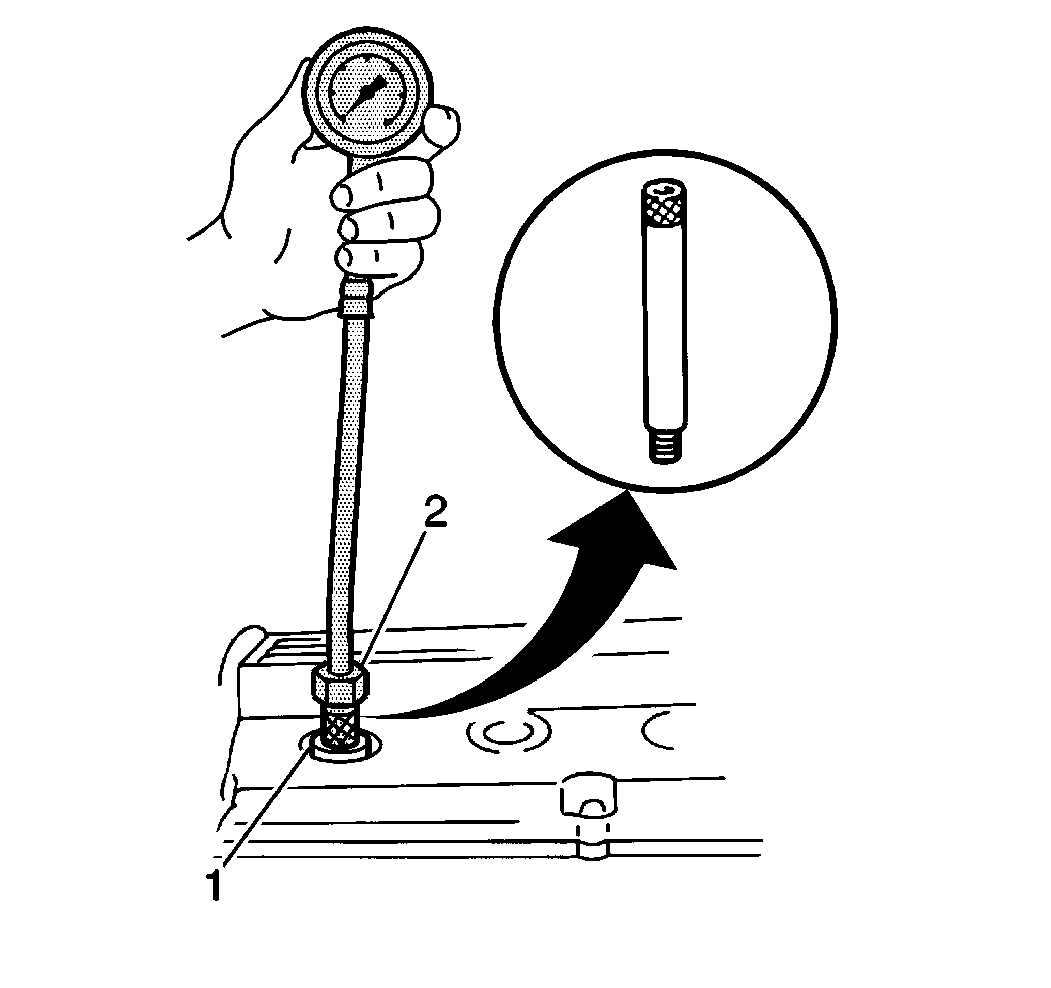Perform a compression test in order to determine the cylinder compression pressure. Use a compression test in order to diagnose lack of power, excessive oil consumption, or poor fuel economy.
- Verify that the battery is fully charged or close to fully charged.
- Disconnect the fuel injector harness electrical connector.
- Disconnect the electrical connectors at the ignition coils (1).
- Remove the ignition coils (1).
- Remove the spark plugs (2).
- Install a compression gage (2) into a spark plug hole.
- Depress the clutch pedal on vehicles that are equipped with a manual transmission.
- Depress the accelerator pedal to the floor for a wide open throttle.
- Crank the engine through four compression strokes for each cylinder being tested.
- Measure and record the highest pressure reading on the compression gauge.
- Repeat the compression test procedures for the remaining three cylinders.
- If some cylinders have low compression, inject approximately 15 ml (one tablespoon) of engine oil into the combustion chamber through the spark plug hole.
- Remove the compression gauge from the engine.
- Install the four spark plugs.
- Install the ignition coils.
- Connect the electrical connectors at the ignition coils.
- Connect the fuel injector harness connector.
Notice: This engine is equipped with an aluminum cylinder head. Allow the engine to cool before removing spark plugs. Removing the spark plugs from an engine at operating temperature may damage the spark plug threads in the cylinder head. Also be sure to clean any dirt or debris from around spark plug holes prior to removing spark plugs.
Important: The engine should be at room temperature.


Standard Compression Pressure
1,400 kPa (199 psi)
Minimum Compression Pressure
1,200 kPa (170 psi)
Compression Variance
The maximum allowable compression pressure difference between any two
cylinders is 100 kPa (15 psi).
| • | Normal -- Compression builds up quickly and evenly to the specified compression for each cylinder. |
| • | Piston Rings Leaking -- Compression is low on the first stroke. Then compression builds up with the following strokes but does not reach normal. Compression improves considerably when oil is added. |
| • | Valves Leaking -- Compression is low on the first stroke. Compression usually does not build up on the following strokes. Compression does not improve much when oil is added. |
| • | If two adjacent cylinders have lower than normal compression, and injecting oil into the cylinders does not increase the compression, the cause may be a head gasket leaking between the two cylinders. |
